|
The wooden grain elevators
are disappearing from the prairie skyline. Here is what is being built
to replace them. This page describes the Weyburn Inland Terminal, a massive
concrete structure built by local farmers to help themselves get better
prices and fairer policies.
This facility holds 3 million bushels. About 1500 farmers invested the cost of a steel bin each, about $1200, to build a modern, fully computerized, world class grain storage, processing and marketing operation. It had won several quality and efficiency awards and has established several firsts:
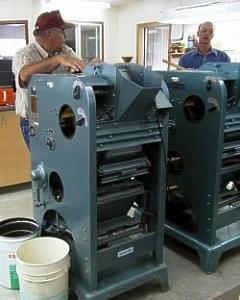 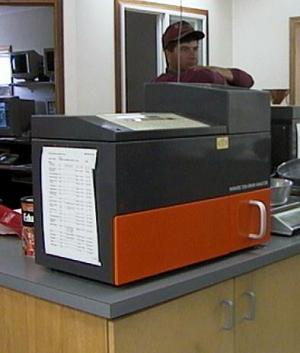 When a farmer arrives with a truck load of grain, a robot arm reaches down from the buyer's office and sends a sample up to the buyer for testing pricing. The sample is separated into good grain, broken kernels, dockage and dirt by the machines in the picture on the left. Then it is tested for moisture content by the computerized machine on the right. 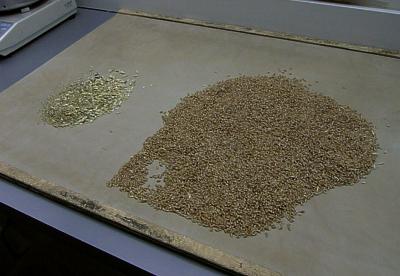 The buyer then visually analyses the sample for grade and puts a value on the truck load before it is dumped. The farmer is even paid for the "dockage" (the pile on the left) because WIT has found customers for it too. 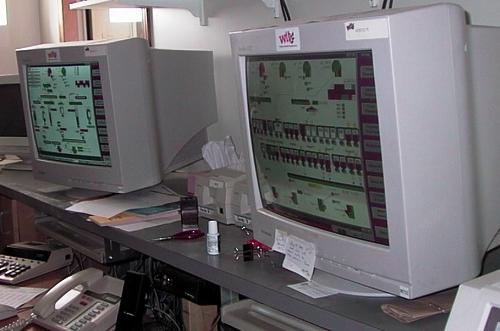
All grain handling is computer controlled. The entire operation is graphically modeled in these consoles.
What makes this operation
special is their ability to exactly meet their customer's specifications.
This means mixing grades and moisture content to get the highest return
for the farmers. Farmers may end up getting paid for a higher grade of
wheat than they are delivering because it can be mixed with other wheat
and still meet a buyer's spec.
What's next - why not make pasta right on site where the grain is freshest and shipping costs 0. |
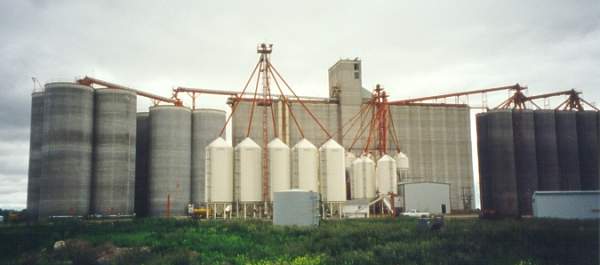
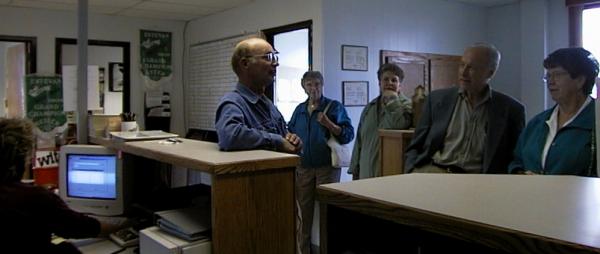
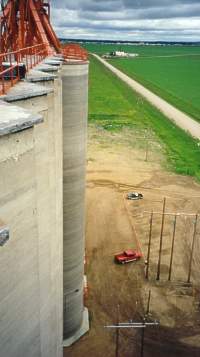 Air
is used to move the grain. Giant 300 hp electric motors are used like vacuum
cleaners to get the grain moving from truck to cleaner to dryer (if necessary)
then to one of the 38 or so round concrete bins.
Air
is used to move the grain. Giant 300 hp electric motors are used like vacuum
cleaners to get the grain moving from truck to cleaner to dryer (if necessary)
then to one of the 38 or so round concrete bins.